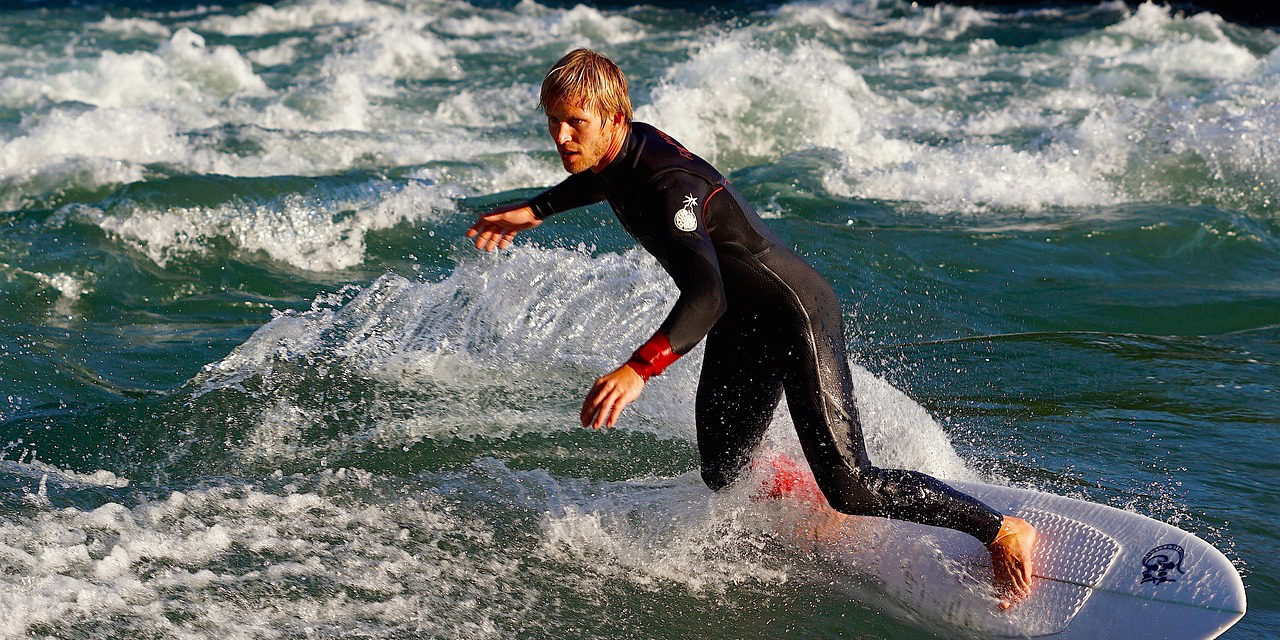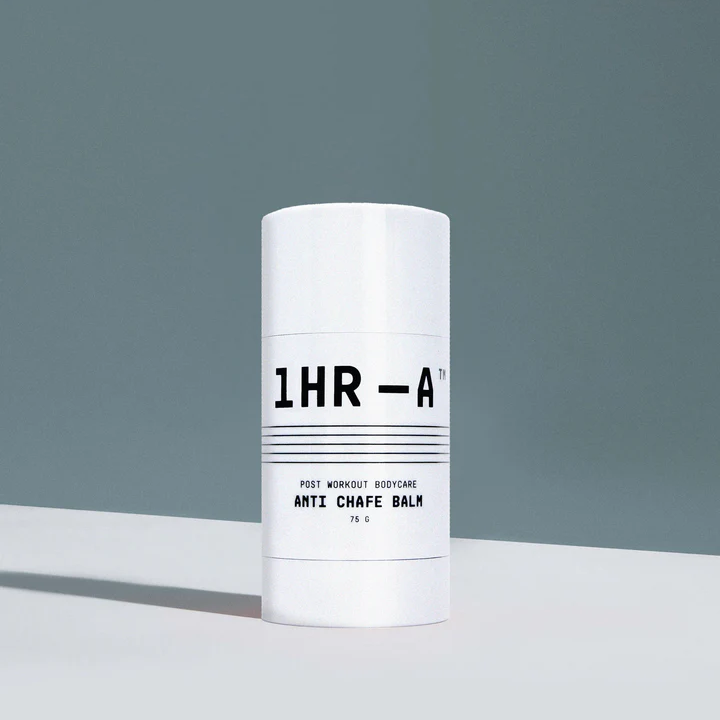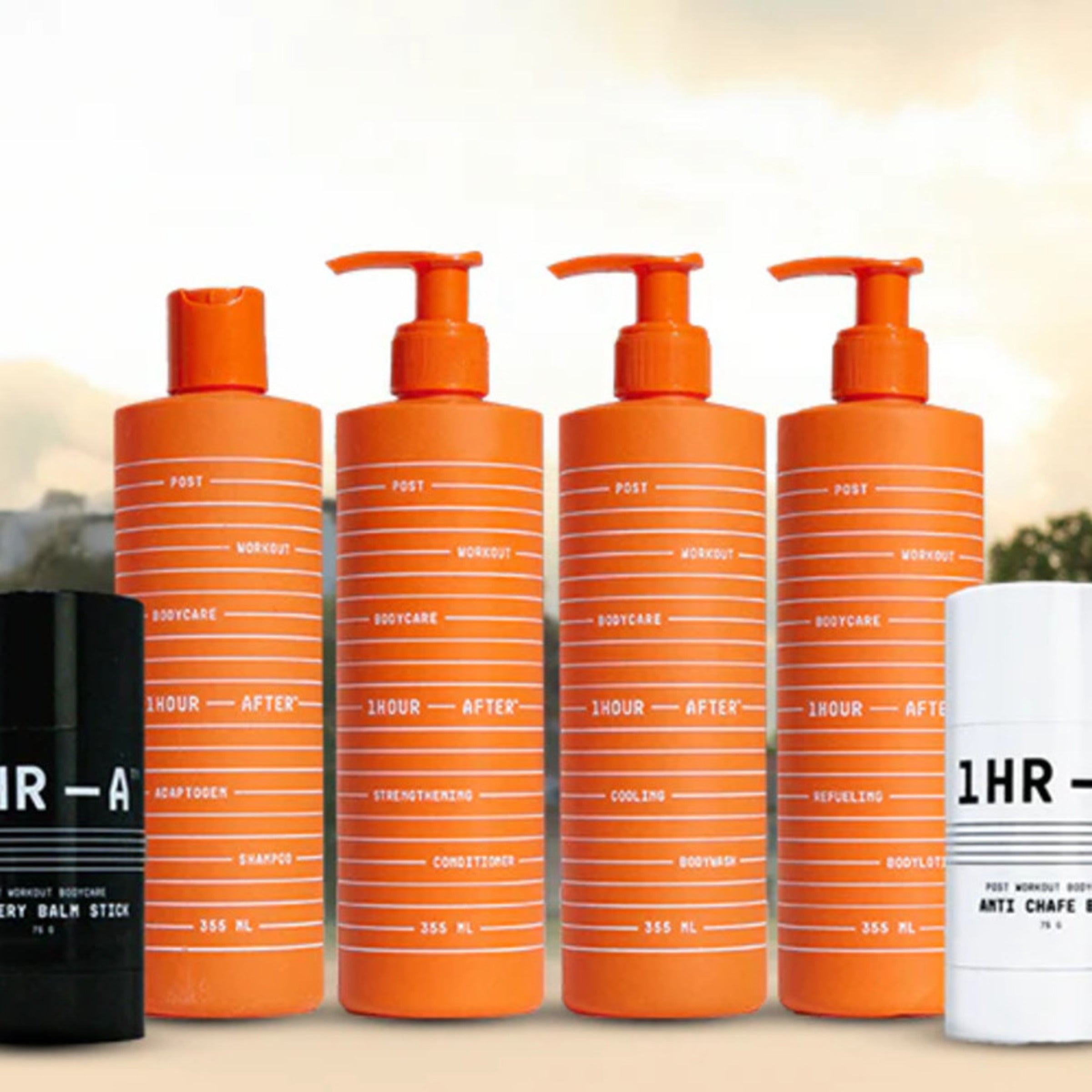
Let’s Talk About Something Irritating – Wetsuit Rash. Essential Tips for Triathletes, Surfers, and Divers Trying to Avoid Skin Irritations.
Table of Contents
Whether you're a triathlete powering through transitions, a surfer catching epic waves, or a diver exploring the deep blue, there's one pesky problem that can throw a wrench in your aquatic adventures—wetsuit rash. Yep, that irritating, itchy, and downright annoying rash that can hamper both your enjoyment and performance in these water-based events.
But fear not, we're here to help you banish wetsuit rash for good. This guide is packed with tips and tricks to keep your skin happy and rash-free, so you can focus on what you love most—dominating the waves, crushing those transitions, and diving into the underwater wonderland. We'll cover everything from what causes wetsuit rash to the best prevention and treatment strategies. So, let's dive in (pun totally intended) and make wetsuit rash a thing of the past!
Understanding Wetsuit Rash
What is a Wetsuit Rash?
Alright, let's break it down. Wetsuit rash, also known as wetsuit chafing, happens when your wetsuit rubs against your skin, causing some seriously annoying irritation. It's the ultimate buzzkill when you're just trying to enjoy your time in the water or smash a triathlon PR.
Common Symptoms
- Red, irritated patches
- Itching and discomfort
- Small bumps or blisters
Areas Most Affected
Wetsuit rash loves to pop up in all the wrong places— where your wetsuit fits the tightest or where there's a lot of movement. We're talking neck, armpits, groin, and behind the knees. Fun times, right?
Visual Identification: How to Recognize Wetsuit Rash
So, how do you spot this little troublemaker? Look for those red, irritated patches, itchiness, and any small bumps or blisters, especially in the areas we just mentioned.
Causes of Wetsuit Rash
- Friction and Chafing - The main culprit here is good ol' friction. When your wetsuit rubs against your skin, it creates that irritating rash.
- Trapped Sand and Debris - Ever notice how sand gets everywhere? Yeah, when it gets trapped between your wetsuit and skin, it can make things worse. Think sandpaper rubbing against your skin. Not nice.
- Allergic Reactions to Neoprene or Other Materials - Some folks have a bit of a sensitivity to neoprene or other wetsuit materials, which can lead to rash city.
- Prolonged Moisture Exposure - Staying wet for too long softens your skin, making it more prone to chafing.
- Improper Wetsuit Fit - If your wetsuit doesn't fit right, it's gonna rub you the wrong way—literally.
- Poor Hygiene Practices - Not cleaning and drying your wetsuit properly? That's a big no-no and can lead to bacteria buildup, increasing the rash risk.
- Environmental Factors - Saltwater, chlorinated water, and other environmental factors can really mess with your skin. This is part and parcel of spending time in bodies of water, but fear not, there are prevention methods to negate these risks.
Prevention Tips
Preventing and treating wetsuit rash is crucial for maintaining skin health and ensuring a comfortable experience in the water. Without engaging in some of these prevention best practices both performance and enjoyment will suffer.
Choosing the Right Wetsuit
The importance of a wetsuit that actually fits your properly cannot be underestimated here. A wetsuit that fits well is your first line of defense. It should be snug but not squeezing the life out of you. If there is too much room or it isn’t snug enough, the rubbing causes friction, which, you guessed it, causes wetsuit rash.
Materials and Lining Considerations
Look for high-quality neoprene with smooth linings to keep the friction at bay. Features to look for in a wetsuit:
- Smooth seams
- Snug fit without restricting movement
- Quality neoprene material
Skin Protection Strategies
There are a host of available products out there that can help prep your skin for the stress that water, sand and wetsuits cause. Applying Anti-Chafing Products like 1HR-A’s Anti Chafe Glide balm are your new best friend. Slather them on to reduce friction and protect your skin. These anti chafe balms help add an extra layer of lubrication to the affected areas. Barrier creams or lotions also help create a protective layer between your skin and the wetsuit. It's like giving your skin a little shield. While wearing a base layer or rash guard can do wonders in reducing direct friction.
Hydration and Skin Care
This isn’t only specific to water based athletes. Hydrated skin is happy skin. Drink up and use moisturizing products before and after hitting the water. Gentle soaps and lotions help maintain your skin's hydration without causing irritation and making sure you are drinking plenty of water and consuming electrolytes will put you in the best possible position for avoiding this irritation
Maintenance and Hygiene
Always rinse your wetsuit with fresh water after each use and hang it up to dry thoroughly. No shortcuts here! If you've got more than one wetsuit, rotate them to ensure each one gets a chance to dry completely between uses.
Treatment Strategies
If you do notice that you are suffering from wetsuit rash, there are some methods that you can engage in at home to help reduce symptoms and treat the affected areas.
- Immediate Care - First things first, rinse the affected area with fresh water right after your activity to wash away salt, sand, and other irritants. After this, use soothing lotions or gels like aloe vera to calm that angry skin.
- Home Remedies – the use of natural anti inflammatory and home remedies like coconut oil, witch hazel and magnesium lotions can help to reduce inflammation and soothe your skin. While a cold compress can be a real lifesaver in reducing inflammation and providing instant relief to any burning pain. For those tougher cases, an over the counter solution like hydrocortisone creams can also aid in reducing inflammation and itching.
When to Seek Medical Attention
Keep an eye out for signs of infection like increased redness, swelling, pus, or drainage. If your rash isn't going away after a week, becomes severe, or is accompanied by a fever, it's time to see a doc.
|
Signs Of Infection |
When To Seek Medical Attention |
|
Increased Redness |
Rash Persists for More than a week |
|
Swelling |
Sever pain or discomfort |
|
Pus or Drainage |
Development of fever |
|
Warmth To The Touch |
Signs of bacterial infection |

Specific Tips for Triathletes
Dealing with Multiple Transitions
Minimize wetsuit wear time during transitions and practice efficient removal techniques to reduce friction. Apply anti chafing balm before and after your swim and make sure that the wetsuit you are using is suited to the water type you are swimming in. If it is a warm weather triathlon, consider a minimal wetsuit for maximum comfort and reduced material coverage.
Training Adjustments
Gradually increase wetsuit usage during training to build skin tolerance. Incorporate anti-chafing practices into your routine.
- Gradual increase in wetsuit usage
- Use of anti-chafing products (Like 1HR-A’s Anti Chafe Balm)
- Incorporate breaks and skin checks

Specific Tips for Surfers
When Handling Long Sessions in Saltwater, Surfers should Regularly adjust and check wetsuit fit during sessions. Take breaks to rinse off saltwater and reduce irritation. When finished in the water it’s important to engaged in a robust Post-Surf Skin Care routine that includes 'Immediately rinsing the body with freshwater' and 'applying soothing balms' to prevent a rash developing.

Specific Tips for Divers
When dealing with extended immersion like divers do, it becomes imperative to ensure wetsuit seals are snug but not too tight. Take preventive measures like applying balms and lotions in all of the high-friction areas like the neck, wrists, and ankles. Again, a Post-Dive skin care routine is essential when being in the water for long periods of time. Thoroughly rinse and dry your wetsuit after diving and make sure to moisturize your skin to counteract exposure to salt or chlorinated water.
Long-Term Skin Care and Health
As well as taking the preventative and post water exposure steps outlined above, there is also something to be said about having a long term skin care and health care routine in place for your daily life. The healthier you treat your skin out side the water, the quicker it is likely to bounce back against external environmental stressors. A big part of this routine should be regular exfoliation. Gently exfoliate to prevent dead skin build-up. Choose products that are suitable for sensitive skin and help to strengthen the skin barrier. As well as this, diet and hydration and supplementation can play a crucial role in skin health. Consume foods that support skin health and stay hydrated to keep your skin resilient.
Recommended Products
- Fragrance-free moisturizers
- Hypoallergenic lotions
- Products with ceramides
- Collagen for skin health
FAQs and Common Concerns Summarised
-
What is a Wetsuit Rash?
- A wetsuit rash is an irritation caused by friction between the wetsuit and skin.
-
How Long Does Wetsuit Rash Last?
- The duration varies but typically lasts a few days to a week.
-
Is It Normal to Get a Wetsuit Neck Rash?
- Yes, the neck is a common area for wetsuit rash due to friction.
-
Effective Wetsuit Rash Treatments?
- Immediate rinsing, soothing lotions, and anti-chafing products are effective treatments.
-
Preventive Measures for Avoiding Wetsuit Rash?
- Proper wetsuit fit, skin protection strategies, and maintaining hydration and hygiene can prevent wetsuit rash.
-
When to Seek Medical Attention for Wetsuit Rash?
- Seek medical attention if the rash persists for more than a week, becomes severe, or shows signs of infection.
-
Do Larger Individuals Have a Higher Risk for Wetsuit Rashes?
- Larger individuals may experience more friction due to tighter wetsuit fits, increasing the risk of rash.
Additional Tips and Tricks
- The Importance of Finding the Proper Fit for Your Wetsuit
- A well-fitting wetsuit minimizes friction and reduces the risk of rash.
- Taking Care of Your Wetsuit
- Proper maintenance and hygiene practices extend the life of your wetsuit and prevent skin irritation.
- Layering for Added Protection
- Wearing a base layer or rash guard provides an additional barrier against friction.
- Using Appropriate Lubricants
- Choose lubricants that are safe for use with neoprene and effective in reducing friction.
|
Lubricant Type |
Benefits |
Drawbacks |
|
Anti-chafing balms |
Reduces friction, easy to apply |
Can be expensive |
|
Silicone-based |
Long-lasting, safe for neoprene |
May be harder to find |
|
Petroleum-based (avoid) |
Widely available |
Damages neoprene |
Preparing Your Skin
- Stay hydrated, listen to your body, and regularly practice to toughen up your skin for water activities.
Conclusion
And there you have it, water adventurers! Preventing and treating wetsuit rash is all about understanding its causes and adopting the right practices and strategies to minimize each of the causes and risks. From choosing the perfect wetsuit to maintaining your skin and gear and investing in preventive products like anti chafe balm, these tips will keep you rash-free and ready for action. So gear up, dive in, and enjoy your time in the water without any pesky rashes holding you back!
More Articles
- Choosing a selection results in a full page refresh.
- Press the space key then arrow keys to make a selection.




